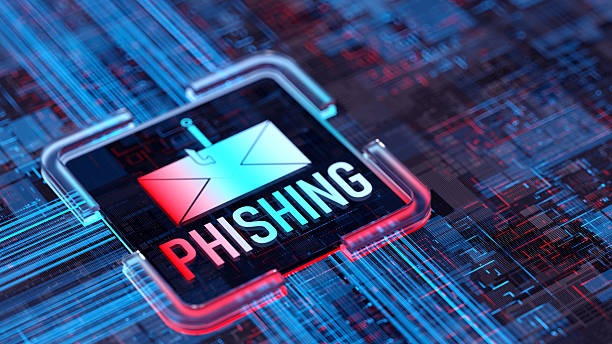Introduction
The evolving landscape of cyber threats demands that organizations invest in robust technical safeguards and prioritize the readiness of their workforce. Phishing remains one of the most prevalent and damaging attack vectors, exploiting human nature to bypass even sophisticated security systems. While technical countermeasures provide an important defense layer, empowering employees with practical, experiential learning is essential. Phishing simulation has emerged as a dynamic training tool that builds lasting awareness, strengthens security culture, and reduces risk across organizations of all sizes.
A well-designed phishing simulation program gives employees the practical skills to recognize, question, and correctly respond to suspicious emails. Unlike theoretical teaching, simulations utilize real-life scenarios to bridge the gap between knowledge and action. As cybercriminals continue to refine their tactics, maintaining regular, meaningful simulation and feedback is not just a best practice, but a necessity for long-term resilience.
Understanding the Role of Phishing Simulations
Phishing simulation is a training method that exposes employees to safe, controlled mock phishing attempts. These simulated attacks are carefully crafted to reflect the tactics used by genuine cybercriminals, providing staff with firsthand experience in identifying deceptive messages. The core aim is to teach employees how to avoid phishing by making them active participants in learning, transforming them from potential targets into vigilant defenders.
Employees who participate in simulated phishing exercises develop heightened awareness and an instinct to avoid links, attachments, or requests for sensitive information. This information helps reinforce the importance of checking email senders, scrutinizing URLs, and evaluating the plausibility of each message they receive. By turning security education into a regular, hands-on activity, organizations embed good habits that persist well beyond scheduled training sessions.
Core Components of an Effective Phishing Simulation Program
The success of a phishing simulation program hinges on its depth, frequency, and adaptability. A robust program replicates the diversity and unpredictability of real phishing campaigns by crafting scenarios that reflect actual threats the organization faces. This includes messages disguised as invoices, human resources communications, IT system alerts, and even time-sensitive requests from senior management. Varying the difficulty and style of simulations ensures continual engagement and learning.
Timely feedback is a vital component. When employees fall for a simulation or successfully detect an attempt, immediate feedback provides valuable context. Explaining warning signs and correct actions immediately helps reinforce concepts and supports positive behavioral change. This feedback should always be clear, constructive, and tailored to the employee’s experience level.
Tracking and analyzing simulation results is also essential. Organizations can tailor future training efforts by reviewing data on who interacts with simulations, which scenarios are most effective, and where mistakes are most frequent. These insights uncover trends and are leading to further attention.
Designing and Implementing Simulations
Designing practical phishing simulations starts with understanding common threats in the organization’s industry and adapting scenarios accordingly. Simulations should be unpredictable in content, preventing participants from simply expecting or ignoring emails. Mixing basic, intermediate, and advanced scenarios ensures broad applicability and growth opportunities for all workforce levels.
Implementation should involve periodic delivery—monthly or quarterly—to keep awareness high without causing disruption. Planning simulations around major events, such as security policy changes, or during high-risk periods, such as tax season, can increase relevancy and reinforce company wisdom. Each simulation must remain confidential until completion to preserve its effectiveness and provide an accurate measure of baseline awareness.
Once a simulation concludes, conducting accurate measurements allows the organization to address any widespread issues immediately. Providing accessible resources, reminders, and best practices after each round helps embed lessons and encourages ongoing vigilance.
Educating and Engaging Your Workforce
Employee education must be ongoing, layered, and practical. Regular communication about the importance of cybersecurity, updates on new phishing trends, and reinforcement of key policies are vital to maintaining an engaged and prepared workforce. Training programs should offer bite-sized learning modules, simple checklists, and clear reporting channels for suspected phishing attempts.
Engagement and collaboration come from creating a supportive culture where every team member feels empowered to question unusual requests and report suspicious messages without fear of blame. Promoting open discussions about recent simulations or prominent phishing news stories encourages learning from shared experiences. Training content should be tailored for different roles and risk profiles to maximize impact, ensuring relevance to every department and responsibility level.
Visual reminders, such as security posters or quick-reference guides, can help sustain long-term awareness. In addition, leadership buy-in—where managers actively participate in simulation training—demonstrates a top-down commitment to digital safety and motivates greater participation across the workforce.
Measuring Success and Improvement
Evaluation is central to the continual refinement of a phishing simulation program. Key performance indicators include simulation click rates, reporting rates, and speed of response to simulated attacks. Over time, a successful program will show a reduction in vulnerable behaviors and an increase in employees who confidently identify and report phishing attempts. These positive trends correlate with greater overall security maturity across the organization.
Organizations should collect and review employee feedback after each training cycle to measure progress. This unveils additional training needs and clarifies which messaging resonates best. Combining quantitative results with qualitative insights supports well-rounded decision-making for future simulations. Sharing anonymous, aggregate results with staff highlights successes, acknowledges improvement, and keeps everyone invested.
Conclusion
Phishing simulation is a proven, practical approach for developing a resilient workforce against modern cyber threats. Through systematic, thoughtful practice, employees and businesspeople transform from potential targets into vigilant defenders, nurturing an active security culture. As the nature of cyber risks continues to evolve, maintaining a strong, simulation-based awareness program is essential for organizations seeking to thrive in the digital age.


